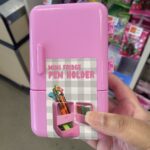Psychology plays a critical role in the retail arena. If you create the right buying conditions and signals it can influence many potential buyers to proceed with their purchase.
Price tag labels are a good example of that psychology in action. The way you present the sticker price and the information it contains could make all the difference when it comes to persuading a customer to buy.
Let’s take a look at the psychology that lies behind your use of price tags in a retail setting.
Avoiding round numbers is a proven strategy
Even when your brain tells you that there is a minimal difference between an item priced at $.99 and $1 you are still likely to be more attracted to an item that is marked up at the lower price.
This tactic is known as charm pricing and is a psychological winner that continues to deliver outstanding results as a regular retail strategy.
Apparently, the psychology behind this phenomenon is our in-built perception of the left-most digit. We tend to read from left to right. This means your brain is reading the first number on the left as its starting point and working across from there.
That’s why a price such as $5.99 looks so much more attractive than $6.00 to our brains, despite such a small difference in value.
Charm pricing is a solid price tag strategy that has stood the test of time and should be deployed as part of your overall retail pricing strategy.
It’s also about the visuals
It stands to reason that if you see a brightly colored price tag that is too big to ignore you are going to be drawn to it.
Our brain is hardwired to interpret the size and length of the text that is contained within the price tag. Strangely, prices that have a more significant number of syllables are viewed with greater magnitude.
If you price up your more expensive items in smaller writing and remove the comma, this can help influence a buyer to make a positive decision.
Where you place the price tag is important
As well as attaching a lot of importance to how you present the pricing information to the consumer there is also the final piece of the jigsaw to consider, the positioning of the label.
Interestingly, how you place the numbers and where you display the price tag are both influential factors when it comes to a buyer’s perception of the cost of an item.
The mechanics of what is going on, broadly speaking, is that your brain has a particular method of making a connection between spatial positioning and an item’s symbolic worth.
In simple terms, we have a more positive association with higher positioning of big numbers compared to lower. When the bigger numbers are on the left of the price tag a typical brain will decode this data in a way that gives the perception of being cheaper and better value than anticipated.
All of these psychological trends have been demonstrated to be one of the keys to a successful retailing strategy.
Now you know, a price tag can really boost your sales when used correctly.



Leave a Reply